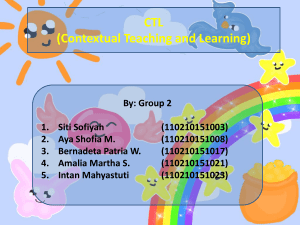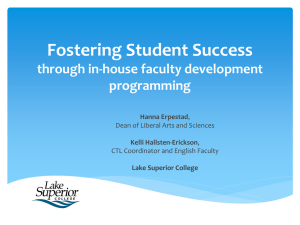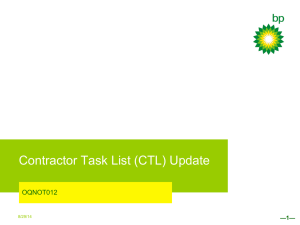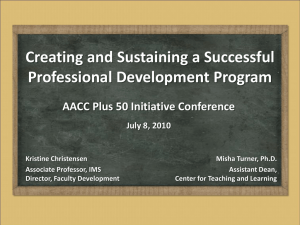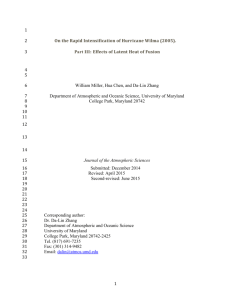Overview - United States Association for Energy Economics
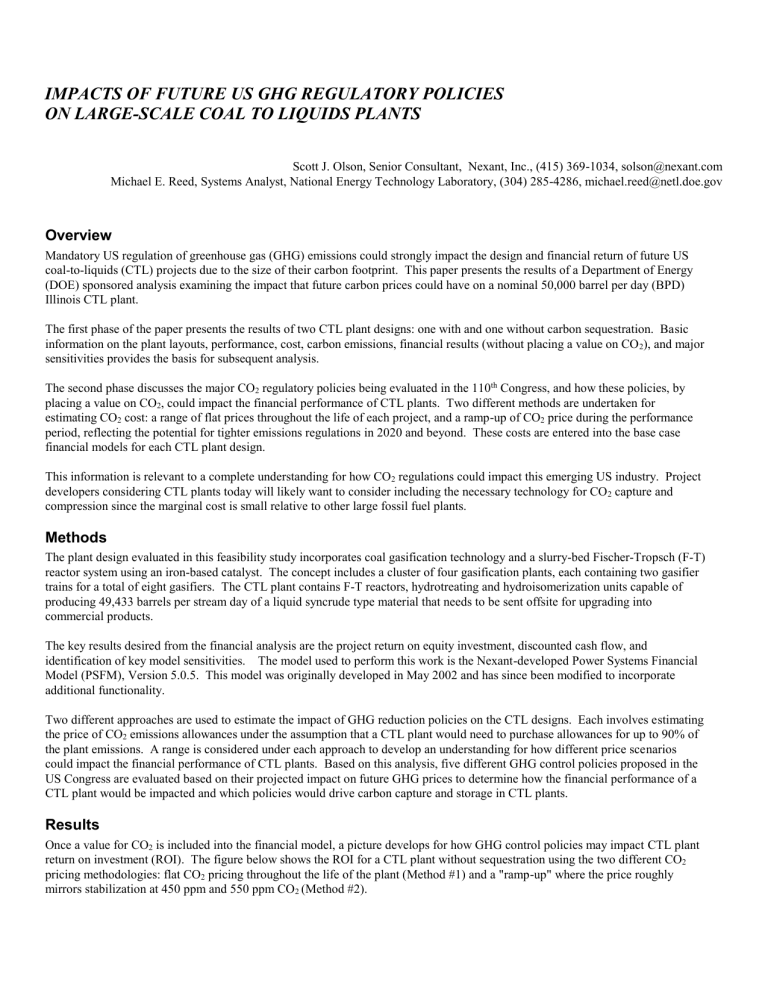
IMPACTS OF FUTURE US GHG REGULATORY POLICIES
ON LARGE-SCALE COAL TO LIQUIDS PLANTS
Scott J. Olson, Senior Consultant, Nexant, Inc., (415) 369-1034, solson@nexant.com
Michael E. Reed, Systems Analyst, National Energy Technology Laboratory, (304) 285-4286, michael.reed@netl.doe.gov
Overview
Mandatory US regulation of greenhouse gas (GHG) emissions could strongly impact the design and financial return of future US coal-to-liquids (CTL) projects due to the size of their carbon footprint. This paper presents the results of a Department of Energy
(DOE) sponsored analysis examining the impact that future carbon prices could have on a nominal 50,000 barrel per day (BPD)
Illinois CTL plant.
The first phase of the paper presents the results of two CTL plant designs: one with and one without carbon sequestration. Basic information on the plant layouts, performance, cost, carbon emissions, financial results (without placing a value on CO
2
), and major sensitivities provides the basis for subsequent analysis.
The second phase discusses the major CO
2
regulatory policies being evaluated in the 110 th Congress, and how these policies, by placing a value on CO
2
, could impact the financial performance of CTL plants. Two different methods are undertaken for estimating CO
2
cost: a range of flat prices throughout the life of each project, and a ramp-up of CO
2
price during the performance period, reflecting the potential for tighter emissions regulations in 2020 and beyond. These costs are entered into the base case financial models for each CTL plant design.
This information is relevant to a complete understanding for how CO
2
regulations could impact this emerging US industry. Project developers considering CTL plants today will likely want to consider including the necessary technology for CO
2
capture and compression since the marginal cost is small relative to other large fossil fuel plants.
Methods
The plant design evaluated in this feasibility study incorporates coal gasification technology and a slurry-bed Fischer-Tropsch (F-T) reactor system using an iron-based catalyst. The concept includes a cluster of four gasification plants, each containing two gasifier trains for a total of eight gasifiers. The CTL plant contains F-T reactors, hydrotreating and hydroisomerization units capable of producing 49,433 barrels per stream day of a liquid syncrude type material that needs to be sent offsite for upgrading into commercial products.
The key results desired from the financial analysis are the project return on equity investment, discounted cash flow, and identification of key model sensitivities. The model used to perform this work is the Nexant-developed Power Systems Financial
Model (PSFM), Version 5.0.5. This model was originally developed in May 2002 and has since been modified to incorporate additional functionality.
Two different approaches are used to estimate the impact of GHG reduction policies on the CTL designs. Each involves estimating the price of CO
2
emissions allowances under the assumption that a CTL plant would need to purchase allowances for up to 90% of the plant emissions. A range is considered under each approach to develop an understanding for how different price scenarios could impact the financial performance of CTL plants. Based on this analysis, five different GHG control policies proposed in the
US Congress are evaluated based on their projected impact on future GHG prices to determine how the financial performance of a
CTL plant would be impacted and which policies would drive carbon capture and storage in CTL plants.
Results
Once a value for CO
2
is included into the financial model, a picture develops for how GHG control policies may impact CTL plant return on investment (ROI). The figure below shows the ROI for a CTL plant without sequestration using the two different CO
2 pricing methodologies: flat CO
2
pricing throughout the life of the plant (Method #1) and a "ramp-up" where the price roughly mirrors stabilization at 450 ppm and 550 ppm CO
2
(Method #2).
Impact of CO
2
Prices, CTL without CCS
20
15
10
550 ppm
5
Method #2:
Ramp-Up Prices
0
-5
0
450 ppm
10 20 30
Method #1:
ROI for flat price range
40 50 60
-10
-15
-20
CO
2
Permit Price
A very wide range of possible financial outcomes are possible depending on the CO
2
price. The results using a flat CO
2
pricing methodology (Method #1) shows that prices must be over $40/ton for the plant ROI to become negative. The benchmark for determining if a plant will be built is not where ROI is zero, but rather where ROI hits the minimum value desired by equity investors. For a plant of this size and risk profile, a return of 12% or more would likely be demanded; it would not take a very high
CO
2
price (only $12.50/ton) for ROIs to dip below 12%.
Using a "ramp-up" of CO
2
prices as performed in Method #2 shows very different results depending on which CO
2
stabilization concentration is set as the goal. The price impacts in the 550 ppm case are relatively small, reducing the ROI 2.5 percentage points to 12.8%. The CO
2
price in the 450 ppm case impacts the plant financials much more significantly, dropping ROI to -8.2%.
Policies that attempt to reach a 450 ppm stabilization goal would almost certainly require that any CTL plants built include equipment for carbon sequestration.
Based on the financial analysis performed for the CTL designs under different CO
2
pricing scenarios, estimates can be made for how each federal GHG reduction policy may impact CTL plant GHG emission strategies. Only the Sanders-Boxer bill, which targets 80% CO2 reduction from 1990 levels by 2050, provides a clear driver for CTL plants to sequester CO
2
. Policies targeting
550 ppm stabilization, such as Kerry-Snowe and McCain-Lieberman, do not give CTL project developers adequate incentives.
Conclusions
When compared to coal plants that generate power only, the net cost of carbon sequestration for CTL plants is low. CTL plants must capture CO
2
due to F-T reactor requirements, making the marginal cost of sequestration from compression, transport, and storage only. Based on the CTL plant design considered during this analysis, this additional cost is estimated to be $12.50/ton CO
2
.
GHG reduction policies that provide an economic driver at this level or greater will provide enough incentive for CTL project developers to strongly consider carbon sequestration in their designs. The relatively low cost of sequestration when compared to other fossil fuel facilities may lead CTL plants to sequester CO
2
and sell emissions credits, providing the plant with an additional revenue stream.
Four of the five US Senate GHG emissions reduction policies evaluated did not provide a clear incentive for the CTL plant evaluated to sequester CO
2
. The imposed carbon prices during most of the plant life are not high enough for a CTL plant startingup in 2011 to change operations. The one policy that does bring about a change in behavior, Sanders-Boxer, provides a relatively high initial CO
2
price that is ramped-up throughout the CTL project life. Due to little bipartisan support for Sanders-Boxer, it is unlikely that a bill of this nature would become law in 2007.
References
Work on this project is supported under DOE Award DE-AC26-04NT41817 and RDS Subcontract 401.01.08.005 to Nexant.
Information on the design and cost of the F-T plant is derived from the NETL/RDS team: Michael Reed (NETL), Erik Shuster
(SAIC, now NETL), John Haslbeck and Mike Rutkowski (Parsons), and Dr. Sheldon Kramer (formerly of Nexant).

